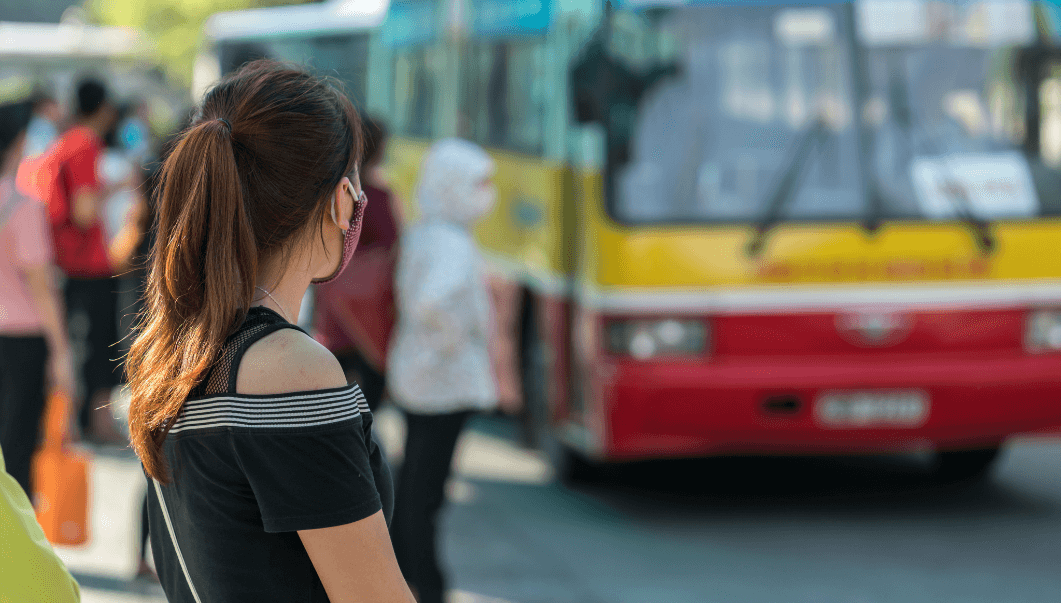
Step into the vibrant world of urban mobility as we unveil the mesmerizing realm of bus interchanges in Singapore.
These captivating hubs are the beating heart of the city’s public transportation system, orchestrating the symphony of buses, trains, and commuters with precision and finesse.
Imagine where bustling streets converge into a seamless tapestry of travel options—where convenience meets connectivity.
That place is the bus interchange, an architectural marvel where buses and dreams merge.
Unlike scattered bus stops, these interchanges stand as grand gateways to the city, uniting various routes and modes of transport under one roof.
Key Takeaways
- Importance of Bus Interchanges: Bus interchanges are critical components of Singapore’s public transportation system, serving as hubs for seamless transfers between different bus routes and modes of transport.
- Definition and Purpose: A bus interchange is a centralized facility that connects various bus routes, equipped with multiple bays for boarding and alighting. It provides amenities like ticketing services, waiting areas, and restrooms for passenger comfort.
- Differentiation from Bus Stops: Unlike scattered bus stops, bus interchanges are strategically located to facilitate efficient transfers and offer more services, making them convenient hubs for commuters.
- Strategic Locations: Major bus interchanges are positioned in densely populated residential areas, commercial hubs, and near MRT stations to ensure easy access for passengers.
- Evolution of Interchanges: Bus interchanges have evolved from basic facilities with limited amenities to modern integrated transport hubs with advanced features and real-time information displays.
- Benefits of Integration: Integrating different modes of transport in bus interchanges enhances connectivity, saves time, reduces friction, and encourages sustainable transportation choices.
- Modern Interchange Features: Modern bus interchanges offer covered walkways, seating areas, real-time bus arrival information, charging points, and facilities for people with disabilities, ensuring a comfortable and inclusive experience.
- Role in Urban Mobility: Bus interchanges play a crucial role in Singapore’s urban mobility landscape by streamlining the bus network, reducing congestion, and supporting sustainable urban development.
- Connectivity and Accessibility: Bus interchanges connect communities and improve accessibility, bridging gaps between neighborhoods and facilitating convenient access to essential services.
- Landmarks and Future Development: Landmark interchanges like Woodlands have transformed public transportation, with continuous enhancements planned to meet growing commuter needs.
Introduction to Bus Interchanges in Singapore
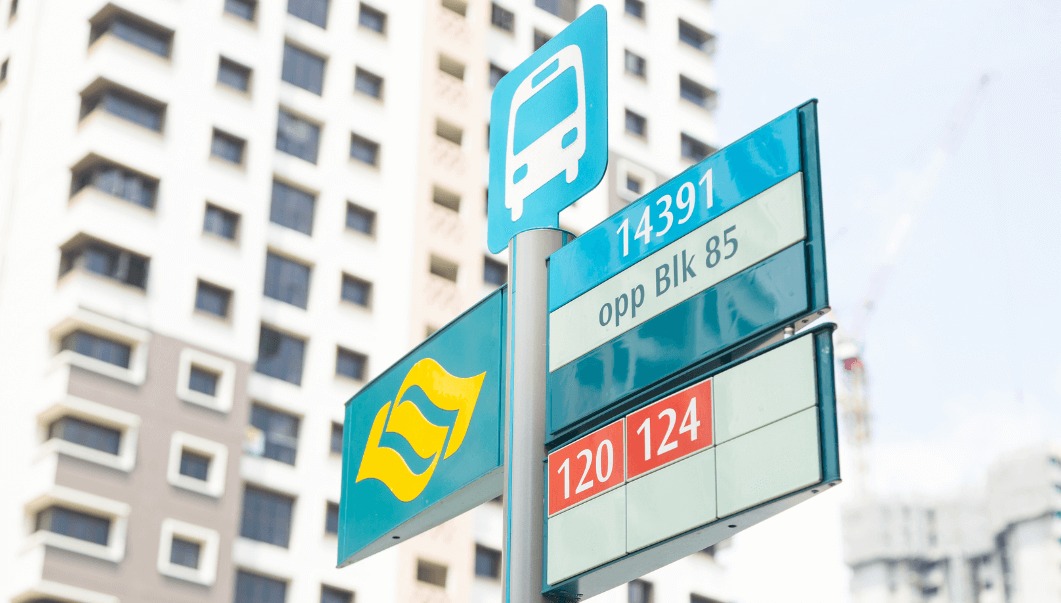
Bus interchanges are crucial components of Singapore’s public transportation system.
They serve as strategic hubs where different bus routes converge, allowing passengers to transfer between buses and other modes of transport conveniently.
Unlike bus stops throughout the city, bus interchanges are designated areas designed to accommodate multiple buses and provide a seamless transition for commuters.
What is a bus interchange?
A bus interchange is a centralized facility that connects various bus routes, serving as a key transfer point for passengers.
It has multiple boarding and alighting bays, allowing buses to pick up and drop off passengers efficiently.
Bus interchanges also provide amenities such as ticketing services, waiting areas, and restrooms, ensuring passenger comfort and convenience.
How are bus interchanges different from bus stops?
While bus stops are scattered throughout the city, bus interchanges are strategically located in key areas to facilitate efficient transfers between multiple bus routes.
Bus interchanges offer more comprehensive facilities and services than bus stops, making them more conducive for passengers to switch between buses or connect with other modes of transport.
Where are the major bus interchanges located in Singapore?
Singapore boasts several major bus interchanges strategically located across the island.
Some renowned bus interchanges include Woodlands Bus Interchange, Bukit Panjang Bus Interchange, and Boon Lay Bus Interchange.
These interchanges are strategically positioned to serve densely populated residential areas, commercial hubs, and transport nodes such as MRT stations, ensuring easy commuter access.
Evolution of Bus Interchanges: From Simple Stops to Integrated Hubs
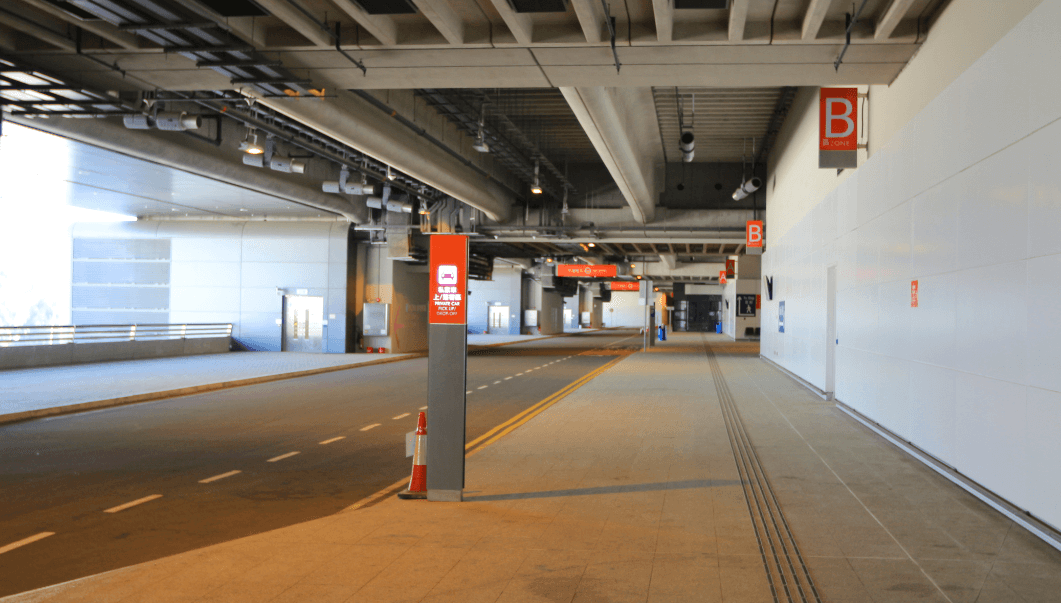
Over the years, bus interchanges in Singapore have undergone significant transformations.
They have evolved from simple bus stops to state-of-the-art integrated transport hubs.
These integrated hubs integrate various modes of transportation, such as buses, MRT (Mass Rapid Transit), and LRT (Light Rail Transit), providing seamless commuter connections.
How have bus interchanges evolved over the years?
In the early days, bus interchanges were basic facilities with a limited number of bus bays and basic amenities.
However, as Singapore’s transportation needs grew, the government invested in upgrading and expanding the interchanges to improve connectivity and enhance the overall commuting experience.
Today’s bus interchanges are equipped with modern amenities, advanced ticketing systems, real-time information displays, and improved infrastructure to cater to the growing population and increasing demand for public transportation.
What are the benefits of integrating different modes of transportation in bus interchanges?
The integration of different modes of transportation in bus interchanges offers numerous advantages.
Firstly, it enhances connectivity by allowing commuters to conveniently switch between buses, MRT, and other methods of transport at a single location.
This seamless connectivity saves time, eliminates the need for multiple ticketing processes, and reduces travel friction for passengers.
What features are commonly found in modern bus interchanges?
Modern bus interchanges are equipped with various features and facilities to cater to the needs of commuters.
These include covered walkways for shelter, ample seating areas, clear signage, electronic display boards with real-time bus arrival information, charging points for electronic devices, and accessible facilities for individuals with disabilities.
The aim is to provide a comfortable and user-friendly experience for all passengers.
The Role of Bus Interchanges in Singapore’s Urban Mobility
Bus interchanges play a crucial role in Singapore’s urban mobility landscape.
They are integral to the city-state’s commitment to providing efficient and sustainable public transport options for its residents and visitors.
How do bus interchanges contribute to Singapore’s efficient public transport system?
Bus interchanges act as central hubs for various bus services, facilitating the bus network’s smooth coordination and efficient operation.
They serve as transfer points, allowing passengers to switch between different buses conveniently.
By consolidating multiple bus routes in a single location, bus interchanges streamline the bus network, reducing delays and improving overall system efficiency.
What is the significance of bus interchanges in reducing private car usage?
Bus interchanges play a vital role in reducing private car usage in Singapore.
By providing seamless transfers between different bus routes and connecting with other modes of transport like MRT, bus interchanges encourage commuters to opt for public transportation instead of driving their cars.
This helps alleviate traffic congestion, reduce carbon emissions, and promote a more sustainable and eco-friendly transport system.
How do bus interchanges support sustainable urban development?
Bus interchanges are an essential component of Singapore’s sustainable urban development efforts.
By promoting public transportation, bus interchanges contribute to more efficient land use and reduce the need for extensive road infrastructure.
Integrating bus interchanges with other modes of transport, such as MRT stations, encourages a multimodal transport system, further supporting sustainable urban development objectives.
Connecting Communities: How Bus Interchanges Enhance Public Transport Accessibility
Bus interchanges are vital in connecting communities and improving public transport accessibility in Singapore.
They ensure residents in different neighborhoods can conveniently access reliable and efficient public transportation services.
How do bus interchanges improve connectivity between different neighborhoods?
Bus interchanges serve as connecting nodes, enabling commuters from different neighborhoods to travel to various parts of the city conveniently.
By consolidating multiple bus routes in a single location, bus interchanges reduce the need for various transfers and simplify the commuting experience.
This enhanced connectivity helps bridge the neighborhood gap and ensures that residents can easily access essential services, employment opportunities, educational institutions, and recreational facilities across the city.
How do bus interchanges facilitate seamless transfers between buses and other modes of transport?
Bus interchanges are strategically located near MRT stations and other transportation hubs, allowing for seamless transfers between buses and different modes of transport.
Commuters can easily switch from buses to trains, or vice versa, without the hassle of navigating multiple ticketing systems or waiting for extended periods.
This integrated approach to public transportation provides a seamless and time-efficient travel experience.
What initiatives are in place to make bus interchanges more accessible for everyone?
The authorities in Singapore are committed to making public transportation, including bus interchanges, accessible for everyone, regardless of their abilities.
Bus interchanges are equipped with ramps, elevators, and tactile guides to aid passengers with disabilities.
Additionally, there are initiatives to improve the signage, lighting, and overall infrastructure to ensure a safe and comfortable environment for all passengers.
Singapore’s First Bus Interchange: A Landmark in Public Transport History
Woodlands Bus Interchange holds a special place in Singapore’s public transport history as the country’s first integrated bus terminal.
It has played a vital role in transforming public transportation in the region.
What was the significance of Woodlands Bus Interchange, Singapore’s first integrated bus terminal?
Woodlands Bus Interchange marked a significant milestone in Singapore’s public transportation journey.
It introduced the concept of integrating various bus routes, eliminating the need for passengers to transfer at different locations.
The centralized design of Woodlands Bus Interchange simplified the commuting experience and paved the way for future developments in public transportation infrastructure.
How has Woodlands Bus Interchange transformed public transportation in the region?
Woodlands Bus Interchange has revolutionized public transportation in the region by enhancing connectivity and streamlining bus services.
It serves as a vital transportation hub for residents in the northern part of Singapore, providing seamless connections to various neighborhoods, commercial areas, and transport nodes like the Woodlands MRT station.
Integrating bus and train services at Woodlands Bus Interchange has significantly improved travel convenience for residents and reduced congestion on the roads.
What plans are in store for the future of Woodlands Bus Interchange?
The future of Woodlands Bus Interchange promises further enhancements and developments.
The authorities continually explore ways to improve its facilities and integrate them further with the evolving transportation network.
Expansion plans, additional amenities, and enhanced connectivity to neighboring areas are being considered to meet the growing needs of commuters and ensure a seamless and efficient travel experience for all.
The Integrated Transport Hub Concept: Uniting Buses, MRT, and More
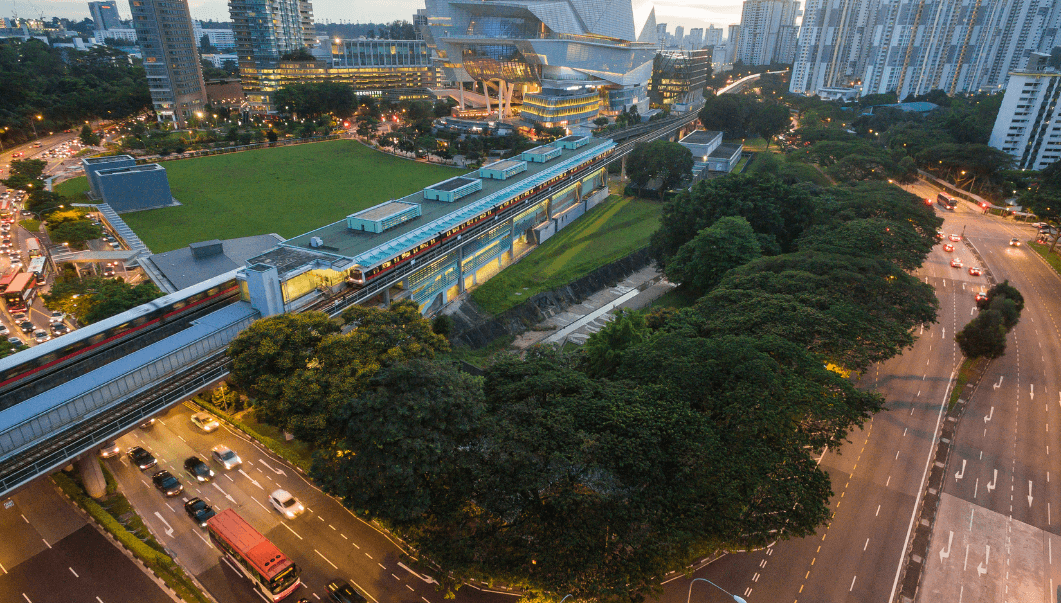
In Singapore, the concept of an integrated transport hub brings together various modes of transport under one roof.
This holistic approach allows commuters to seamlessly transfer between different modes of transportation, such as buses and MRT, making their journeys more convenient and efficient.
Enhancing Urban Transportation
Bus interchanges play a crucial role in enhancing urban transportation.
By providing a centralized location for transferring between buses and other modes of transport like MRT, they reduce the need for multiple transfers and simplify the commuting experience for passengers.
This integrated approach encourages more people to choose public transport, reducing traffic congestion and improving overall transport efficiency.
Exploring Interchange Locations
Bus interchanges are strategically located throughout Singapore to maximize convenience and accessibility for commuters.
Locations such as Yishun, Bedok, Jurong East, and Clementi have well-designed bus interchanges that cater to the transportation needs of these specific areas.
The proximity of bus interchanges to residential areas, businesses, and educational institutions ensures that commuters have easy access to public transport.
Encouraging Park and Ride
Park and ride facilities are an integral part of bus interchanges.
They provide ample parking space for commuters to park their vehicles and conveniently transfer to buses or MRT for onward journeys.
This encourages the use of public transport and reduces the reliance on private cars, thus contributing to the alleviation of traffic congestion and promoting greener transport options.
Inside a Bus Interchange: Facilities and Services for Commuters
Bus interchanges are designed with commuter convenience in mind.
They offer a range of centralized facilities and services to ensure a comfortable and hassle-free traveling experience.
Centralized Facilities for Commuter Convenience
Bus interchanges house facilities such as ticketing counters, information kiosks, restrooms, and passenger waiting areas.
These centralized facilities provide commuters easy access to essential services and information, enhancing their overall experience.
Ample Parking Space and Feeder Buses
Bus interchanges provide ample parking spaces for commuters who prefer to drive and leave their vehicles before continuing their journeys by public transport.
In addition to parking facilities, feeder buses operate near the interchange, connecting nearby neighborhoods to the central transport hub.
Efficient Alighting Berths and Bus Stops
Alighting berths and bus stops within the bus interchange are designed to ensure smooth and efficient boarding and alighting processes for passengers.
Clear signage and well-organized bus bays help commuters identify their buses quickly and minimize confusion.
Seamless Transfers: How Bus Interchanges Facilitate Transit Connectivity

Bus interchanges are instrumental in facilitating seamless transfers between different modes of transport, including buses and MRT.
This connectivity allows commuters to travel conveniently and efficiently throughout the city.
Enhancing Transport Connectivity
Bus interchanges act as transport hubs where different bus routes converge.
This enables commuters to transfer from one bus to another easily and quickly, ensuring smooth connections and uninterrupted journeys.
Optimizing Bus Network for Community Access
The design and layout of a bus interchange are planned to optimize the bus network and provide efficient access to different parts of the community.
Interchange locations are strategically chosen to serve as key transit nodes, ensuring residents can access public transportation conveniently.
Improving Bus Service Efficiency with Transit Infrastructure
Bus interchanges have transit infrastructure such as covered walkways, shelters, and passenger information systems.
These facilities improve bus service efficiency, allowing commuters to wait comfortably for their buses and access real-time bus service information.
Efficient Passenger Flow Management: Designing Bus Interchanges for Convenience
Efficient passenger flow management is a crucial aspect of designing bus interchanges.
The layout and design of bus interchanges prioritize smooth and convenient travel experiences for commuters.
Enhancing Transport Accessibility
Bus interchanges are designed to be accessible to people of all abilities.
Ramps, elevators, and designated boarding areas for passengers with special needs are some of the accessibility features incorporated into their design.
Creating an Excellent Commuter Experience
Bus interchanges strive to create an excellent commuter experience by providing seating areas, green spaces, and retail outlets.
This enhances the overall ambiance of the business and makes waiting for buses a more pleasant experience for commuters.
Innovative Bus Station Design for Efficient Passenger Flow
The design of bus interchanges focuses on ensuring efficient passenger flow within the business.
The location of bus bays, clear signage, and well-defined pedestrian pathways are some of the key elements considered during the design process to minimize congestion and optimize the movement of passengers.
From Woodlands to Tampines North: Exploring Iconic Bus Interchanges
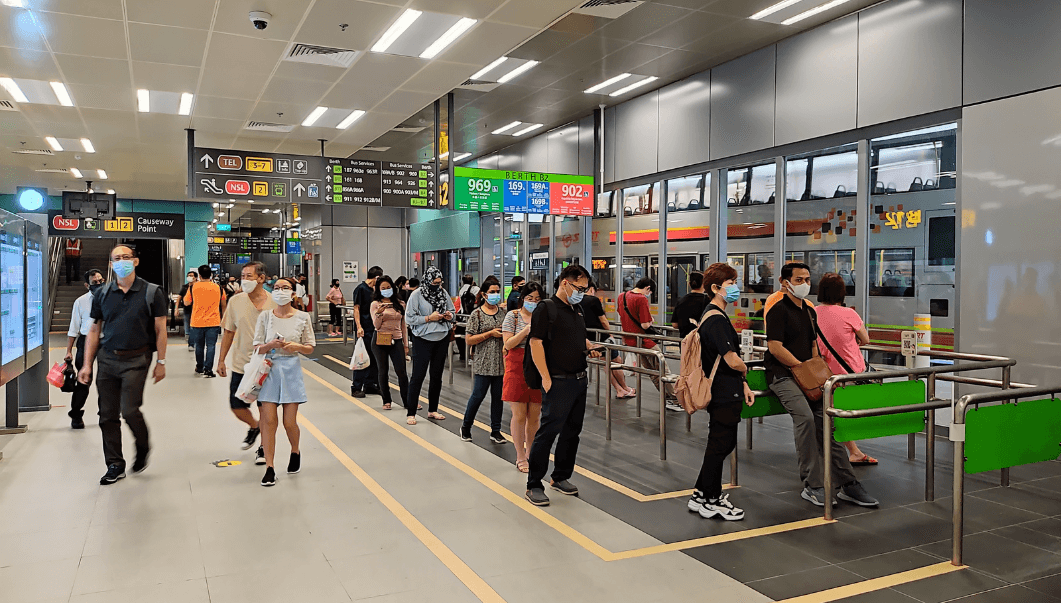
Singapore is home to several iconic bus interchanges that showcase the best practices in design and functionality.
From Woodlands to Tampines North, these bus interchanges play a vital role in serving their respective communities.
Discovering Woodlands Bus Interchange’s Features
Woodlands Bus Interchange, located in the northern region of Singapore, is a bustling transport hub.
It connects various bus services and provides seamless connections to the nearby Woodlands MRT station.
The interchange boasts efficient passenger flow management, ample parking, regional bus, and a wide range of facilities for the convenience of commuters.
Exploring Boon Lay Bus Interchange and Tower Transit’s Role
Boon Lay Bus Interchange, operated by SBS Transit, is in western Singapore.
It serves as a prominent transportation hub for residents of Jurong West and connects several bus services to the Boon Lay MRT station.
Tower Transit, a major bus operator in Singapore, plays a crucial role in managing this interchange and ensuring smooth operations.
Highlights of Bus Interchange in Tampines North
Tampines North Bus Interchange, an essential transport terminal in eastern Singapore, provides efficient connectivity to nearby residential areas.
The interchange offers convenient transfers between buses and connects to the Tampines Concourse MRT station.
Its design prioritizes passenger flow management and provides a comfortable environment for commuters.
Bus Interchange Architecture: Blending Functionality with Aesthetic Design
Bus interchange architecture and design principles
Bus interchange architecture is guided by several design principles that aim to blend functionality with aesthetic appeal.
The layout and structure of a bus interchange are carefully planned to optimize the flow of buses, passengers, busiest bus, payoh, and traffic.
Consideration is given to factors such as bus terminal design, bus interchange planning, and transport integration.
The importance of aesthetics in bus interchange design
While functionality is essential, aesthetics also play a crucial role in bus interchange design.
An aesthetically pleasing and well-designed bus interchange can enhance the overall appeal of a city and contribute to a positive commuting experience.
Attention to detail, such as landscaping, lighting, and architectural features, can create a pleasant and welcoming environment for commuters.
Maximizing functionality and efficiency in bus interchange layout
Maximizing functionality and efficiency is a primary goal when planning the layout of a bus interchange.
The arrangement of bus stops, waiting areas, ticketing booths, and other commuter facilities is carefully considered to ensure smooth and seamless transitions for passengers.
Efforts are made to minimize walking distances, optimize passenger flow, and incorporate accessible features to cater to all commuters, including those with special needs.
Sustainability in Transit: How Bus Interchanges Contribute to Eco-Friendly Commuting

The role of bus interchanges in reducing carbon emissions
Bus interchanges play a significant role in reducing carbon emissions and promoting sustainable transportation.
By encouraging commuters to use public transport instead of private vehicles, bus interchange and the first help decrease the number of cars on the road, reducing air pollution and greenhouse gas emissions.
This contributes to a cleaner and greener environment.
Incorporating green features in bus interchange infrastructure
Bus interchanges are often equipped with green features to support eco-friendly commuting further.
These may include energy-efficient lighting systems, solar panels for renewable energy generation, joo koon bus interchange, rainwater harvesting systems for landscape irrigation, and waste management facilities.
Integrating these green features helps minimize the ecological footprint of bus interchanges.
Encouraging sustainable commuting through bus interchange facilities
Bus interchanges also encourage sustainable commuting by providing facilities that support environmentally-friendly transport options.
These may include bicycle racks, e-scooter charging stations, and pedestrian-friendly infrastructure.
By promoting alternative modes of transport, bus interchanges help reduce reliance on private vehicles and promote sustainable travel choices.
Intermodal Transport Solutions: The Role of Bus Interchanges in Multimodal Connectivity
Enhancing connectivity between buses and other modes of transport
Bus interchanges play a crucial role in enhancing connectivity between buses and other modes of transport.
They serve as convenient transfer points, allowing commuters to switch seamlessly between different modes of transportation, such as trains, taxis, and bicycles.
This multimodal connectivity facilitates efficient and convenient travel options for commuters.
Integrating bus interchanges with MRT stations for seamless transfers
Integrating bus interchanges and MRT (Mass Rapid Transit) stations is common in many cities.
This integration enables commuters to enjoy seamless transfers between bus and train services, clementi bus, 30 bus, reducing travel time and providing a more convenient commuting experience.
The strategic location of bus interchanges near MRT stations ensures efficient interconnectivity within the public transport network.
Facilitating multimodal journeys through strategic bus interchange locations
Strategic bus interchange locations are carefully planned to facilitate multimodal journeys.
These locations are often selected based on population density, transport routes, and the need for improved accessibility.
By strategically positioning bus interchanges, cities can offer efficient and integrated transport options, encouraging commuters to choose public transport for their daily travels.
Urban Development Around Bus Interchanges: Impact on Communities and Accessibility
The influence of bus interchanges on urban planning and development
Bus interchanges have a significant influence on urban planning and development.
The presence of a well-designed and efficiently functioning bus interchange can attract businesses, bulim bus package, residential products, and public amenities to the surrounding areas.
This can lead to improved accessibility, increased economic activity, and enhanced quality of life for the local communities.
Improving accessibility and connectivity through bus interchange infrastructure
The infrastructure surrounding bus interchanges is designed to improve accessibility and connectivity.
Pedestrian walkways, cycling paths, and well-connected road networks are developed to facilitate easy access to and from the bus interchange.
Such measures ensure that commuters can conveniently reach their destinations and enable smooth movement within the urban transport system.
Community integration and amenities around bus interchanges
New Bus interchanges often serve as community hubs, providing various amenities and services.
These may include retail outlets, food stalls, seating areas, restrooms, and information kiosks.
The integration of these amenities enhances the overall experience of commuters, bus lines, making the bus interchange a transportation facility and a vibrant and inclusive community space.
The Future of Bus Interchanges: Innovations and Trends in Public Transport Integration
Smart technologies for efficient bus interchange operations
The future of bus interchanges will see the integration of intelligent technologies for more efficient operations.
This includes real-time monitoring systems, innovative ticketing solutions, and predictive analytics to optimize bus schedules and passenger flow.
These technological advancements aim to enhance the overall user experience and improve the efficiency of bus interchange operations.
Advancements in passenger flow management at bus interchanges Technological advancementsized passenger flow advances in technologies such as automated fare collection, intelligent transportation systems, and crowd management will be implemented at bus interchanges.
These innovations will help reduce queuing time, minimize congestion,bus interchange to open, and provide a more seamless journey for commuters.
Integrated ticketing systems and seamless transfers in the future
In the future, integrated ticketing systems will become more prevalent, allowing commuters to travel seamlessly across different modes of transport with a single ticket or payment method.
This will eliminate the need for separate tickets when transferring between buses and other transportation modes, further enhancing the convenience and efficiency of public transportation.
Conclusion
Dive into the urban mobility world by exploring Singapore’s bus interchanges! These dynamic hubs are at the heart of the city’s efficient public transportation system.
Imagine a place where different bus routes converge, seamlessly connecting you to various destinations.
Unlike scattered bus stops, these interchanges are strategic nodes designed to make your journey smooth and hassle-free.
So, what exactly is a bus interchange?
Picture it as a central facility where buses and other transport modes converge.
You can easily hop on and off buses with multiple boarding bays, streamlining your commute.
But that’s not all – these interchanges are equipped with amenities like ticketing services, waiting areas, and even restrooms, ensuring your comfort throughout your journey.
Now, how are bus interchanges different from bus stops?
While stops are scattered, swaps are strategic.
They’re located in critical areas, like Woodlands, Bukit Panjang, and Boon Lay, serving communities and commercial hubs and connecting with MRT stations.
They’re like transport powerhouses, ensuring you’re connected wherever you need to go.
Frequently Asked Questions
What is a bus interchange?
A bus interchange is a facility where different bus services converge, and passengers can transfer from one bus to another.
Where is the Woodlands Bus Interchange located?
The Woodlands Bus Interchange is located in Woodlands, near Woodlands MRT station.
Which bus services are available at the Woodlands Bus Interchange?
The Woodlands Bus Interchange provides various bus services operated by SBS Transit and other bus operators.
What is the bus contracting model?
The bus contracting model is a framework implemented by Singapore’s Land Transport Authority (LTA) to improve bus services.
Under this model, bus routes and services are tendered to different bus operators, ensuring competitive pricing and better service quality.
When did the Woodlands Bus Interchange open?
The Woodlands Bus Interchange began operating on [DATE].
It is one of the 26 bus interchanges in Singapore.
What are the facilities available at the Woodlands Bus Interchange?
The Woodlands Bus Interchange offers various amenities, such as air-conditioned waiting areas, passenger information boards, and ticketing machines.
How can I obtain bus service information at the Woodlands Bus Interchange?
At the Woodlands Bus Interchange, you can find bus service information displayed on electronic boards and obtain printed bus schedules from the information counter.
Can I transfer from a bus to the Mass Rapid Transit (MRT) at the Woodlands Bus Interchange?
The Woodlands Bus Interchange is conveniently located near Woodlands MRT station, offering seamless transfers between bus and MRT services.
What other bus interchanges are nearby?
Nearby bus interchanges include Jurong Bus Interchange and Sengkang Bus Interchange.
Is the Woodlands Bus Interchange wheelchair accessible?
Yes, the Woodlands Bus Interchange is wheelchair accessible, ensuring convenient access for passengers with mobility needs.












